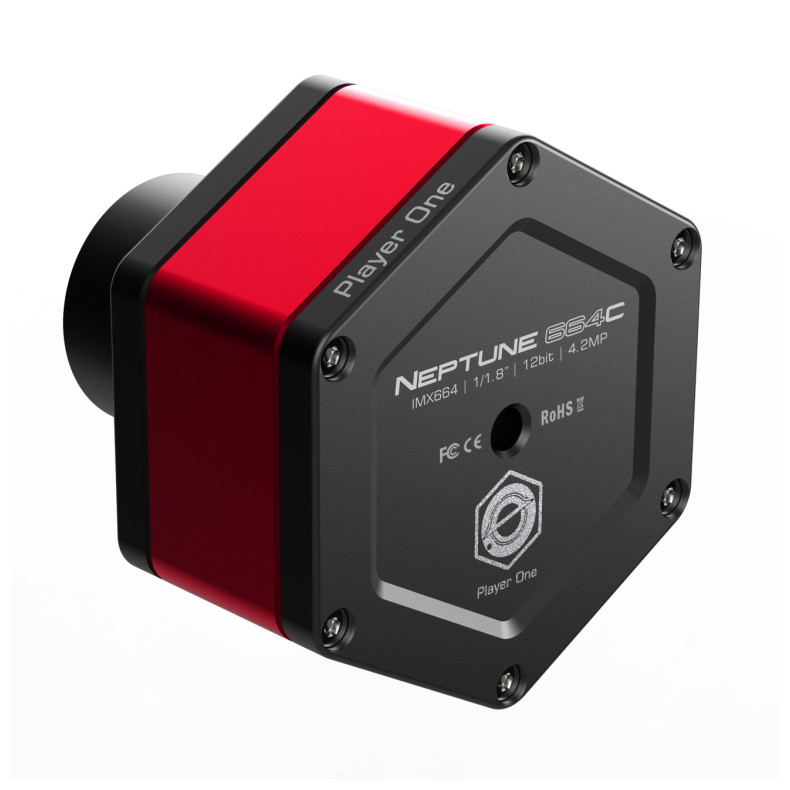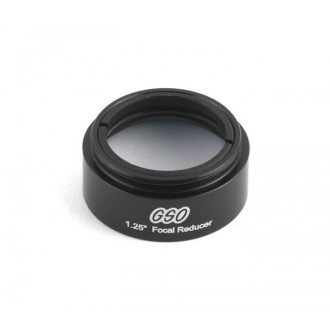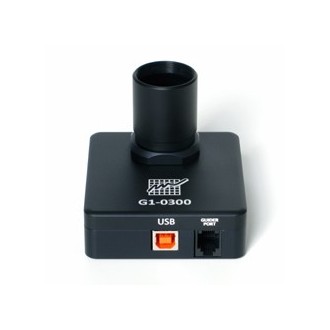Deliver it 16/23 days
Player One Neptune-664C USB 3.0 (IMX664) Camera Color
NEPTUNE 664C opens the door to the NEPTUNE 3rd Gen, the newest planetary camera developed by Player One Astronomy. A successor to the Neptune-C II (IMX464) camera.
| Carrier | Description | Estimated Delivery | ||
|---|---|---|---|---|
 |
Home delivery - International | Home delivery - International |
Thursday, 8 May - Thursday, 15 May |
|

Home delivery - International
Home delivery - International
Estimated delivery:
Thursday, 8 May - Thursday, 15 May
PRODUCT DESCRIPTION
NEPTUNE 664C camera adopts 1/1.8" Sony IMX664 color sensor. The pixel size of 2.9um fits a depth of 38.5ke with a total of 4.2MP (the resolution is 2704*1540) and the diagonal is 6.46mm.
Super AR Plus Window
NEPTUNE 664C using this Super AR Plus window in front of it. This window glass can offer super high transmittance from 310 nm to 1100 nm. This significant improvement makes the NEPTUNE 664C camera perform much better in both Ultravoilet and NIR.

The name of the cameras Player One Astronomy is unique. For example, we name the planetary cameras after planets (they are Mercury, Venus, Mars, Jupiter, Saturn, Uranus, and Neptune; Earth is not included). The size of each planet represents to some extent the size of the camera sensors. We will name Saturn with a 1-inch sensor camera, and Mars, we will name with a ½.8-inch sensor camera. All names will be engraved on the housing of the cameras.
STARVIS 2 Technology
NEPTUNE 664C, based on Sony's newest STARVIS 2 technology, is a back-illuminated pixel technology used in CMOS image sensors.
Glow without amplifier
The biggest surprise of the NEPTUNE 664C camera is that its dark frame is totally "dark", whatever the intensity of the curve, there is no AMP glow.
1960s dark frame from the Uranus-C camera (resize to 50%):

Summarized Characteristics:
Comparison of 3 generations.
Player One adds all our best technology to the third generation NEPTUNE 664C. You will see the advantages, such as Super AR plus window and passive cooling system. Those features will ensure that NEPTUNE 664C will be very competitive in the market.
Avant-garde design
The planetary cameras developed by Player One Astronomy use scientific and technological regular hexagon to build the main body line, complemented by round chamfers for rigidity and flexibility. The positive red, which is like a summer fire, is combined with the discreet and steady black, and the super-fine glazing process on the whole surface makes the camera look luxurious and cool, highlighting the style of high-end players.
2.generation: sensor tilt plate
The built-in high-density sponge shading pad can block light from the side slits without side leakage.
When taking solar photographs with a prominent telescope, the Newton's ring is annoying. A sharper solar image could be taken without the Newton's ring by adjusting the focal plate. Achieve a much smaller field curvature of the telescope.


256 MB DDR3 cache
The cameras Player One Astronomy are the first to adopt DDR3 cache in all planetary cameras worldwide. It helps stabilize and secure data transmission, effectively prevents frame drop and greatly reduces read noise.
With the DDR3 cache, the camera no longer has high demands on computing needs, it will still perform excellently even when connected to a USB 2.0 port.
DPS Technology
The planetary chambers of Player One Astronomy feature DPS (Dead Pixel Suppression) technology. DPS analyzes many dark frames to discover the fixed abnormal pixels and record the map in the camera's memory. In images, at each exposure frame, the dead pixel position will be given an average value according to the active pixels around that abnormal pixel.![]()
Passive cooling system
Player One adds a new feature called Passive Cooling System to conduct heat away from the sensor to the outside.

Overvoltage and overcurrent protection mechanism.
Player One cameras produced by Player One ensure the safety of your camera and other equipment through overvoltage and overcurrent protection mechanisms.
Data port
When the camera is connected to the USB3.0 interface and a full resolution preview is used, it can achieve 93 FPS in RAW8 mode (10-bit ADC) and the frame rate in RAW16 mode (12-bit ADC) is 46.5 frames per second. When recording images, since the actual writing speed will be affected by the writing speed of the hard disk itself, when the writing speed of the hard disk is slow, the recording may not reach the theoretical speed. It is recommended to use a high quality solid state drive to record data and take full advantage of the camera's performance.
Use the ST4 guide cable to connect the camera and the AUTO GUIDE port of the equatorial mount for guiding.
Performance
HCG opens with gain = 180.

Reading noise
As for the read noise, we solemnly promise that all values are obtained from real tests. And for users, you can use Sharpcap 4 for testing. SC4 has a feature called Sensor Analysis, which provides a very simple way to test read noise.
After many rigorous read noise tests, the camera can achieve a low read noise of 0.75e with a gain of 350 and about 0.67e with a gain of 450.
If you are interested in performing read noise tests, you can try it yourself, which is very simple.
HCG mode
The NEPTUNE 664C camera has a unique HCG mode, which will automatically activate when the camera gain setting is ≥180. The HCG mode can greatly reduce read noise and retain the same high dynamic range as low gain.
Quantitative easing curve
The QE curve of the NEPTUNE 664C camera tells us that this camera is an NIR enhanced camera. By operating after the Super AR Plus window, this camera will maintain a very high QE in infrared.
This is the relative QE curve provided by Sony, the absolute peak QE is around 91%.
Technical drawing:
























